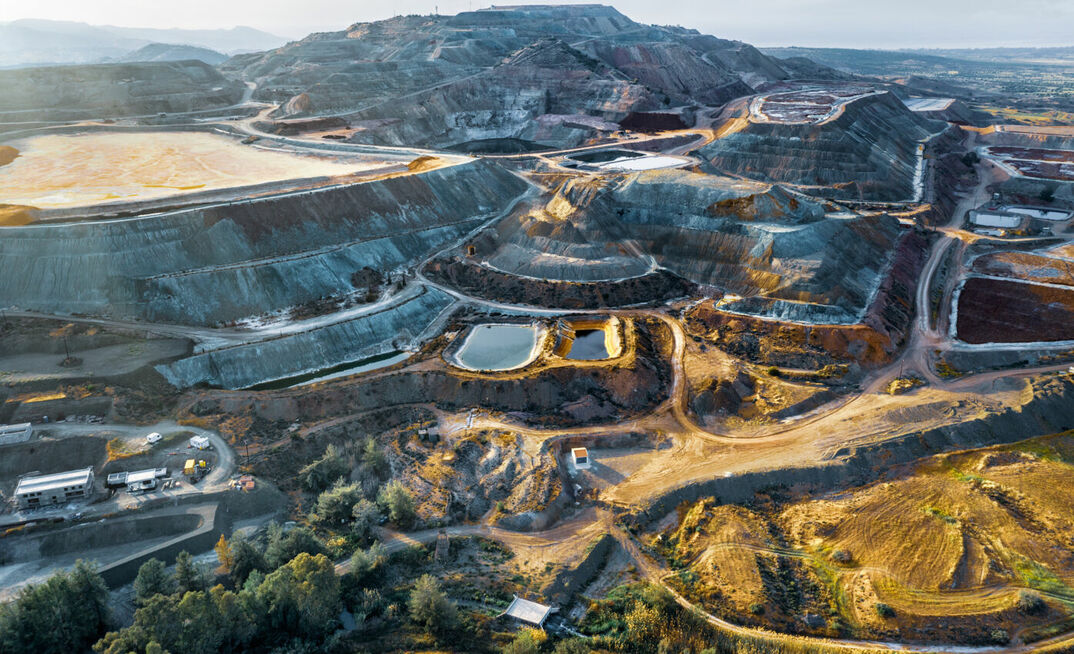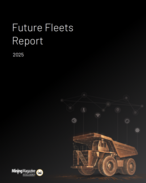Sami Takaluoma of global mining decarbonisation pioneer Metso takes a bullish view of the sector's role in supporting the world's energy transition and electrification efforts to secure a sustainable future.
Metso, based in Espoo, Finland has actively led the way in introducing sustainable solutions to the mining sector for decades. In a wide-ranging interview, we talked about this with Sami Takaluoma, President of the company's Services business area, which covers parts, upgrades and aftermarket expertise for its installed base as well as third-party equipment.
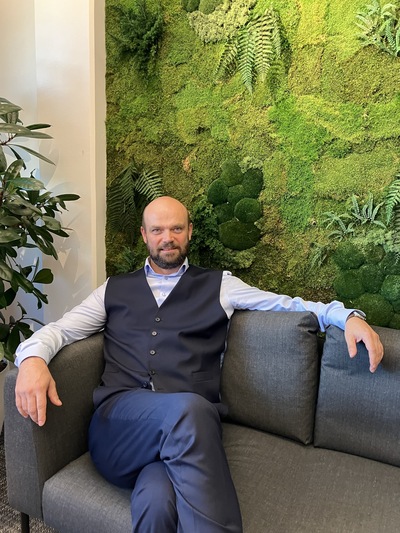
What are the big challenges you're seeing when it comes to a topic on everyone's mind: mining and its relationship with sustainability?
It's an interesting question. Mining is mostly a solution here in terms of supplying needed minerals for the world's energy transition but, as an industry, it has to survive in this sustainability climate. Challenges even start with the permit issuing process, which is not always standardized, and it has become a truly dynamic environment. This can leave miners unsure of all the required environmental elements, metrics and KPI's involved to secure a new permit or even maintain an existing one. Another aspect is that demand for sustainable metals is increasing. That sounds like an opportunity but there's only a very small premium the market is willing to pay for it which creates challenges. Then I always want to highlight the safety part: including safe operations throughout the entire value chain which can be a further issue with remote sites operating under quite harsh conditions.
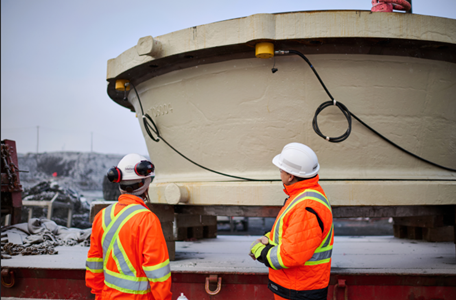
Mining is facing a bit of a paradox. If we want to get to a highly sustainable future, we are going to have to rely on mining to support the next waves and yet the industry is not always perceived in a positive light.
Moving towards an electrified world requires a significant amount of minerals such as copper and lithium. Processing more minerals however, requires more power, but in the fight against climate change, high power consumption is seen as a big enemy. That's the challenge, how to balance these two: the products from the mine that are critical for the transition, and the tremendous amount of additional energy required to extract them.
You mentioned there is no great premium willingly being paid by buyers. Do you see any upcoming changes here: any carrots or incentives, perhaps at the state or government level?
That is coming in my view. At the end of the value chain there is always the consumer, and there is a growing demand for knowing how raw materials are sourced for mobile phones, TV's, cars etc. That creates market dynamics favouring premium products that don't have a negative environmental impact. In the end game, I see a more black-and-white situation where only sustainable options are available. In terms of mining, the world is going in that direction anyway, so in truth the industry has no choice but to join in the sustainable mining movement.
But it's not only the market dynamics; there's also the social governance part. Miners are located in communities, some of them very remote, and they have a responsibility and obligations towards the environment and people in the region. That's one driver that's supporting actions to become more sustainable. It's not just a slogan, it's a fact that this has a licence-to-operate impact. If you're not sustainable, you're not going to be granted the license to continue operations.
We see a lot of smarter vehicles, remote access, doing demanding work around mining without physical interventions using things like Digital Twins and 3D modelling. What are the trends that most excite you in that sphere?
You mention one that is very clear and that is utilizing digitalization. That comes with many aspects: it's allowing for remote operation and support and that is immediately reducing the CO2 footprint when you don't need to do the ‘fly in, fly out' operations so much.
‘Optimizing' is the operative word. Greenfield projects are being built with sustainability already inside the planning, but even the brownfields that are mature in production have the capability to reduce their carbon footprint, sometimes significantly. Optimizing can involve adjusting the way the plant is operating or completely replacing non-sustainable equipment with new technology. It could also mean optimizing parts to last longer or perform better as well as upgrading or modernizing older machines to gain advantages towards energy or water usage. There are diverse options but when these are consolidated it can result in a huge impact.
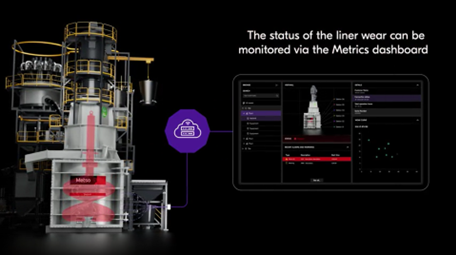
Let's zoom in on Metso. Where do you feel you help in sustainable mining projects?
Sustainability has been the cornerstone of our company values since Metso's inception and even before that if you take our legacy companies into account. When it comes to helping mining operations or projects, technology and optimization are clearly at the top of what we bring to the table; that's what we do. We don't approve any internal R&D project without having the impact for sustainability built into the offering. This is what is driving our Planet Positive initiative, which currently has over 100 products and services meeting the Planet Positive designation with more in the pipeline. To meet the criteria, the offering must bring measured sustainability improvements over the industry standard or previous Metso technologies. Planet Positive solutions offer miners the possibility to better control their own carbon footprint.
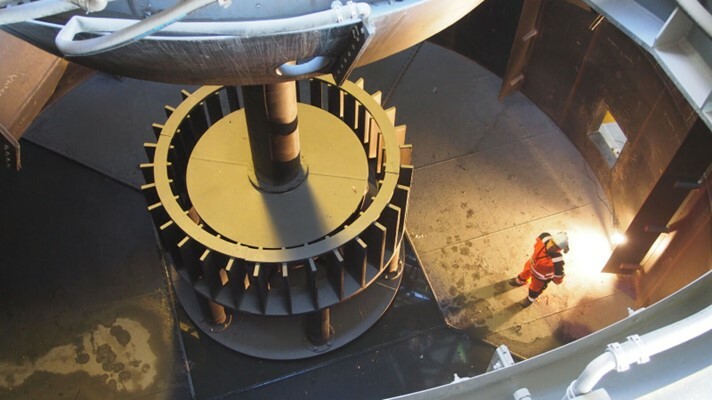
Metso's Planet Positive FloatForce® upgrade improves metallurgical performance and energy efficiency
Of course, we have our own foundries and factories where we made significant improvements, and we have our ambitions to be net-zero as a supplier. However, we have also been really focusing on our customers, helping miners to reduce their own footprints which can have a bigger total impact.
In terms of our own suppliers, we have made great strides in identifying and selecting ones we feel fit with our vision and protocols regarding sustainability. At Metso, we make sure we do it by the book, meaning our suppliers need to register themselves to the Science Based Targets initiative (SBTI) system and not simply say that they have taken sustainability into account. In this way, when a miner buys a Metso product, they know that we have conducted the proper due diligence from our side.
These initiatives are part of our efforts to meet science-based targets that's been ongoing for years as we continue that work proudly.
And once again, I want to stress safety here. We take the utmost care of the safety part, not only ourselves but also the subcontractors and the customer operators who are with us.
You mentioned Digital Twin and that is a very interesting way of supporting our customers to create more sustainable flow sheets.

You're one of the few mining-related organisations that has sustainability implicit in pretty much everything you do. Of course, everyone must have it in their marketing boilerplate text, but for you it almost becomes a Unique Selling Proposition (USP). Do you see more organisations joining in the ‘sustainability everywhere' race?
Thank you for noticing that! It's the cornerstone of our whole company and we started this work long before it has gained the level of significance that it has today. In the beginning it was challenging to start the dialogue with our own suppliers, but we have been doing relentless work with them and it's getting easier and easier to open this topic with them.
We have our peers that have also started to be active when it comes to marketing and we have customers taking the same approach, which is good because then we all talk the same language. We have some customers that are front-runners, and we are actively partnering with them to develop and pilot various sustainable solutions. We have seen many companies following this lead.
You mentioned globalization and I think you are present in 477 locations around the world. You recently opened a service centre in Karratha, Western Australia. Can you explain that rationale behind these centres?
We're very proud of that Karratha investment for various reasons! First, the Pilbara area and the city of Karratha are extremely remote but very active from a mining and minerals processing point of view. So, why invest there? It's part of our regionalization strategy, which has a very strong link to sustainability. When you are closer to the customer's sites, you need less trucking to serve them. Before we opened at Karratha, we needed to take customers' parts or equipment 1,700 km to Perth for repairs before covering the same distance again to return it to the mine site or plant. You not only save a lot of lead time when your service centers are located close by, but you save on shipping costs and it also carries a CO2-related saving, so it ticks a lot of boxes. In addition, it opens the option to repair certain larger parts or equipment which in the past may have not been a viable option due to travel costs. Parts that are repaired means less waste is sent to landfills and you also eliminate the carbon emissions related to build replacement products so it is a double benefit.
The new center is also state-of-the-art so it provides the safest working environment from the beginning. Customer success was the real driver for the project and to my surprise, though there had been some previous investments in the region from other players, there really wasn't anything of this size or scope that had been developed.
I also want to mention the social governance point of view and the fact that the people from the local municipality and community highly appreciated the opportunities and jobs created in the area.
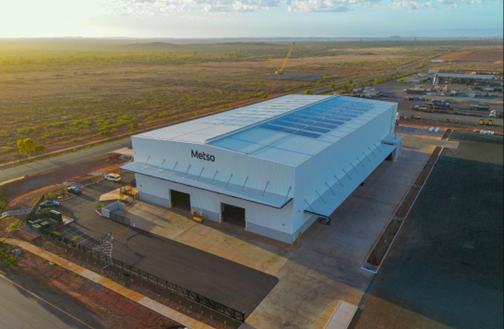
To what extent is Metso involved in advanced digitalization: wireless networking, the Internet of Things, control and management software. Where does Metso fit in with the uber-trend towards digitalization?
You have a good list of where value can be created for miners, and one more is AI. That's an extremely interesting tool for the future. We have one of the largest, if not the largest, installed base in the world and by collecting data from different applications and utilising AI for understanding algorithms we can optimize even further. We can answer questions such as ‘How do we know when there's a need for service or parts to be replaced so that we don't waste time or resources?'
We don't waste resources when we are able to execute just-in-time processes and repairs, so digitalization that helps in this area will create a lot of added value for mining companies. Metso is currently on that road and we have certain advantages that come from having a global presence, global applications, and an extensive installed base as well as the industry experience to leverage these factors. Then there are smaller companies, even startups, that bring interesting things for certain areas and customers, and we are always on the lookout as to how we can use those concepts at a more global level.
The safety aspect is again very clear here. Some customers in for instance Karratha have operation centres thousands of kilometres away and remotely operate stockyards from Perth which allows them the ability to keep people safer and reach more skilled labour. Metso currently takes a similar approach with our remote monitoring and Performance Centers, which can help identify when a service team needs to be sent to site and where these types of actions are not needed or can be executed by the customers own site team.
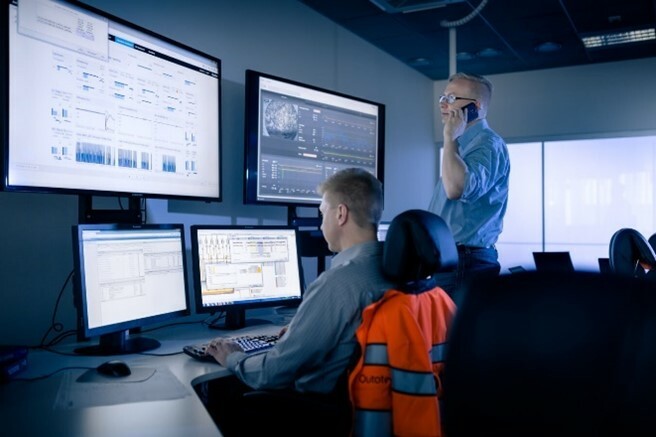
However, ‘optimizing' is still my number-one word here. We haven't yet fully capitalised on the value that can be created. Take wear parts for example. We can design parts so that a crusher uses the minimal amount of energy and with digital tools these optimization efforts can be done even more quickly and even online.
Then there's the Circular Economy concept, extending the lifecycle of equipment and parts and also leveraging recycling. We recycle many of our foundry products, collecting worn liners and using the recovered materials for new ones. Metso was also an early pioneer when it comes to recycling worn rubber and Poly-Met mill linings. This service was recently expanded to South America with the inauguration of our new recycling plant in Chile. The solution enables the separation of different liner materials so that the valuable rubber and steel components can either be reused in the manufacturing of new products or recycled.
We also focus on making lighter products because they mean less energy is needed to rotate or run the equipment and in addition it's easier to transport from A to B. So, the lighter the components are, the less CO2 is needed to move them around. Of course, you also need to balance this to ensure parts are robust. Parts that last longer mean they need to be changed less often, meaning fewer used components in landfills.
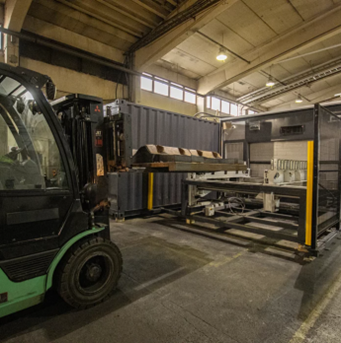
Some mining infrastructure/equipment providers are becoming technology developers, often buying into that space through M&A and becoming almost software-centric organisations. Do you see a time when Metso becomes a digital company rather than a user of digital tools?
Metso being a software company? Never say never but it's not in the current strategy book! Of course, we have a digital business and we're planning to increase the business coming from digital solutions but we're focusing more on the ‘something as a service' concept, for example, sustainability as a service. We're gaining a very good understanding of the needs of our mining customers and we see our digital offering as supporting or even more accurately enabling our current business offerings.
Ultimately, is it possible for customers to balance sustainability vs profitability? Can these two aims coexist? They have to, don't they?
It is possible but it's always dependent on the status of the customer in question and their business situation. It will get easier and easier as the technology develops and that also means the so-called sustainable technologies become as cost effective as other options. In many cases, even though sustainable equipment, upgrades or parts may carry upfront costs, they can be long lasting improvements. They can also bring energy savings or other benefits that can rapidly help to deliver a significant and quick payback on the investment. So, in many ways the twin ideas of profitability and sustainability can be linked.
Some people believe that current targets are too ambitious and it's too hard to get to net-zero. Do you expect some course-correction to take place?
For some players in the current market the targets might seem too ambitious. But I'm a big believer in technology development and nobody can know what great engineers will be able to create in the years to come. I haven't lost my faith, and I don't recommend to pushing forward or going back on commitments. I stay 100% positive in my belief we can get there as an industry.
So, you have to speculate to accumulate. What is the overriding ambition of Metso? What does success look like?
Success is where we have done our part with our own footprint and reached the target of becoming a net-zero player. Most importantly, we see success where we've been able to develop new technologies, products and business models for customers to allow them to significantly reduce their own footprints. We aim to be the undisputed number-one go-to company when sustainable mining is in your mind.
Let's look forward. We talked about AI but what do you see happening in the next three to five years with that and other technologies?
Sometimes with AI it seems too good to be true; sometimes it's really frightening and sometimes it's difficult for the human brain to understand the possibilities and the massive impact we can create. AI will be the main tool for finding areas to optimize, reduce waste and minimize consumption of equipment, parts and resources. Removing human errors will also be a very important part, but we need to understand the AI capability to guide it and lead it in the right way. Right now, it's the buzzword and ‘the biggest thing since fire or the wheel'. That may be true, but we need to be wise and open in our views. The power is not by someone doing something alone; there must be more collaboration.
And AI is only one new thing. I'm sure there will be something else not linked to AI that will come on to the scene in the coming years. We don't know what that is, but many players are developing offerings that will shake things up once again.
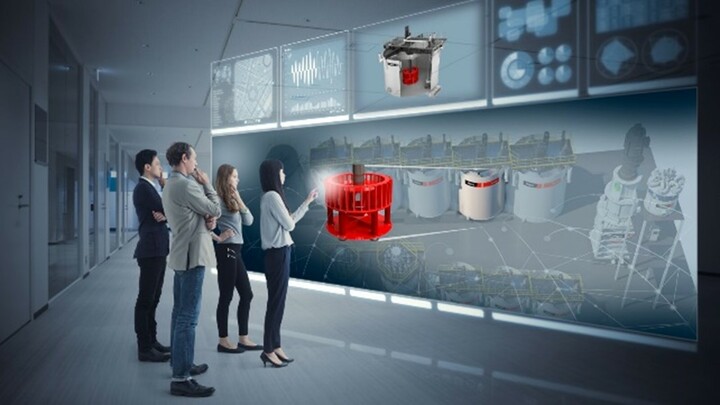
Collaboration is interesting. Miners are creating partnerships between themselves, with academics, governments, and other stakeholders. We need people to lead the technology and not be led by the technology.
It's true. In mining especially there are a lot of stakeholders needed for successful operations. The collaborative approach is enormously powerful for creating success that is much greater than the sum of its components. Sharing is caring, as I like to say.
And let's remember where we started this discussion. Mining will be needed even more in the future than today to help the world in its electrification efforts and be successful in the CO2 fight. That means there will be more production from existing mines as well as new mines opening to supply those metals. We need to work relentlessly to make sure the extra capacity added will come with a significantly lower sustainable footprint.
For more ideas and inspiration, explore Metso's full aftermarket offering here: Your #1 service partner from pit to port.
ABOUT THIS COMPANY
Metso
Metso is a frontrunner in sustainable technologies, end-to-end solutions and services for the aggregates, minerals processing and metals refining industries globally. We improve our customers’ energy and water efficiency, increase their productivity, and reduce environmental risks with our product and service expertise.
HEAD OFFICE:
- Rauhalanpuisto 9, 02230, Espoo, Finland
- Phone: +358 20 484 100
- Web: www.metso.com/


